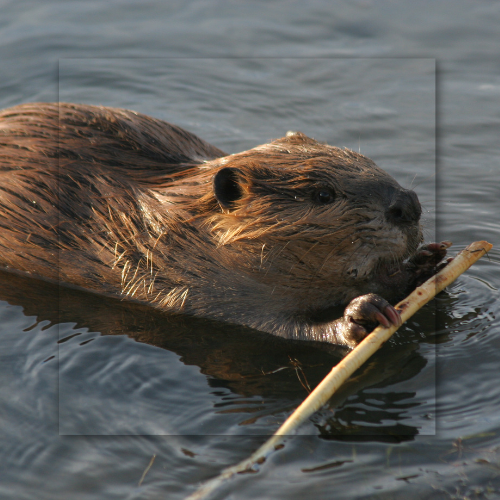
Beaver Removal And Control
In this part of the country, we're often charmed by the wildlife that shares our natural surroundings. But sometimes, nature’s architects become more of a nuisance than a neighbor. We're talking, of course, about beavers. These industrious animals can create havoc that disrupts not only your property but also your peace of mind.
So, let's dive into the world of these fascinating yet troublesome animals. North Atlanta is mostly home to the North American beaver, known scientifically as Castor canadensis. Now, it might surprise you that these critters are second only to humans in their ability to change and manipulate their environment. With their sharp teeth, they can cut down trees and build dams that are engineering marvels in the animal kingdom. While this is fascinating from a natural history perspective, it’s far less appealing when that engineering project is happening in your backyard.
The problems that these creatures cause is far-reaching. Their dams may seem cute, but they can cause water to overflow, leading to flooding in the surrounding areas. Imagine waking up to find your carefully tended garden submerged, or worse, water creeping into your basement. They can also block man-made drainage systems, creating a cascading effect of water-related issues, such as soil erosion and even road damage. What's more, they're not dining on just any wood; these critters often favor the expensive, ornamental trees that you may have invested in for your property's landscape.
You may be tempted to tackle this nuisance on your own, thinking, how hard can it be to dismantle a dam? However, do-it-yourself methods are rarely effective and can be dangerous. Beavers are protective animals, especially when guarding their young, and they have sharp teeth that can cause serious injuries. Additionally, taking apart a dam without proper knowledge can result in sudden water surges, leading to unexpected flooding or other unintended consequences. That’s why it’s always best to leave the task to professionals who understand the biology and behavior of these animals, as well as the safe and humane ways to remove them.
There are some interesting facts about these water-dwelling pests that many people are unaware of. Did you know that a beaver’s teeth never stop growing? That's right, they keep gnawing on wood not just to build their homes but also to keep their teeth from growing too long. Here's another fact: they are largely nocturnal. This means that they often do their disruptive work under the cover of darkness, making it harder for you to catch them in the act.
Statistically speaking, the issues caused by these animals are not to be taken lightly. Property damage caused by wildlife accounts for hundreds of millions of dollars in costs annually across the United States. Furthermore, these critters are rapidly increasing in population in areas close to human habitation, meaning the potential for problems is growing.
We're experts with years of experience in dealing with various types of wildlife nuisances. Our methods are not only effective but also humane, ensuring that the animals are treated with the respect they deserve, despite the problems they may cause. Moreover, we adhere to all local and state regulations for wildlife removal, ensuring that you won't face any legal issues down the line. Finally, we understand the local ecosystem and strive to ensure that our actions are environmentally responsible.
In conclusion, while these critters are undoubtedly incredible architects of the animal world, their activities can cause substantial damage and distress when they encroach on human territories. If you're dealing with this type of pest problem, it's crucial to rely on professionals for responsible and effective removal. We have the expertise to handle these situations, providing you with peace of mind and a critter-free property. To schedule an inspection please contact us; we're here to help.
Frequently Asked Beaver Questions
Q1. How do I know if beavers are causing problems on my property?
A1. The most noticeable sign of a presence is the existence of a dam or lodge in nearby bodies of water. You may also find felled trees, especially those with distinct teeth marks around the base, a good indicator that the animal has been at work. Flooding in unusual areas, or changes in water levels, can also suggest activity. Finally, you might hear distinctive sounds like splashing or slapping on water, as these creatures are known to communicate in this way, especially if they feel threatened.
Q2. Can't I just dismantle the dam myself?
A2. While it might seem like a straightforward task, attempting to take apart a beaver dam on your own can be risky. The structures are often more intricate than they appear and disrupting them can result in sudden water surges that may lead to unexpected flooding. Additionally, beavers can become aggressive, particularly when they feel their territory is being invaded. Professionals have the experience and expertise to remove these dams safely, humanely, and in compliance with local and state regulations.
Q3. What are some of the environmental impacts of removing beavers?
A3. Beavers are often considered keystone species because they create wetlands, which benefit many other types of wildlife. However, when they become nuisances, their activities can lead to detrimental effects like flooding, property damage, and even road collapses. Professional wildlife management companies strive to balance the ecological importance of beavers with the need to protect human property and safety. We are committed to using humane and environmentally responsible methods for removal, so as to minimize the impact on local ecosystems.
Grade A Critter
